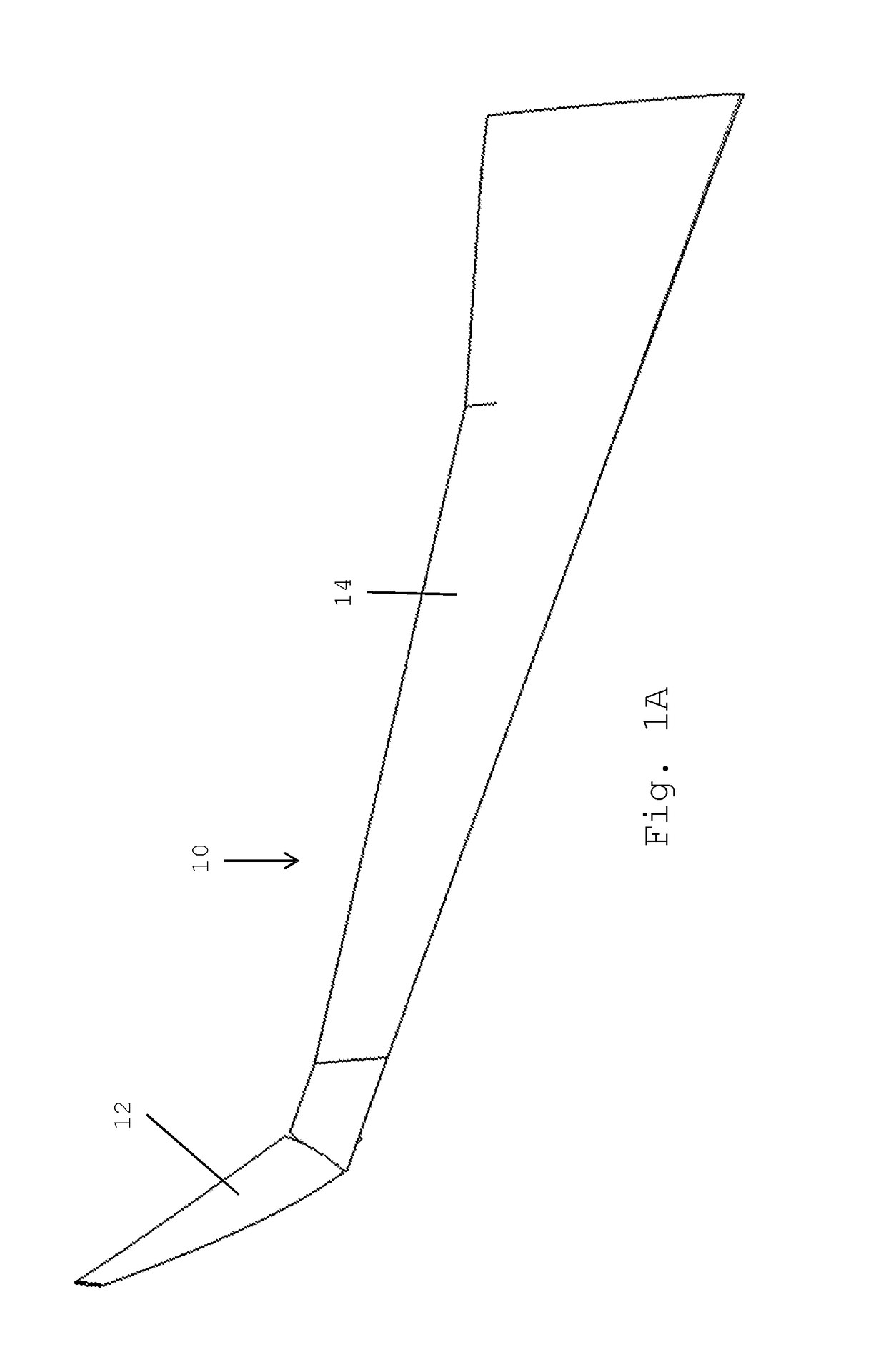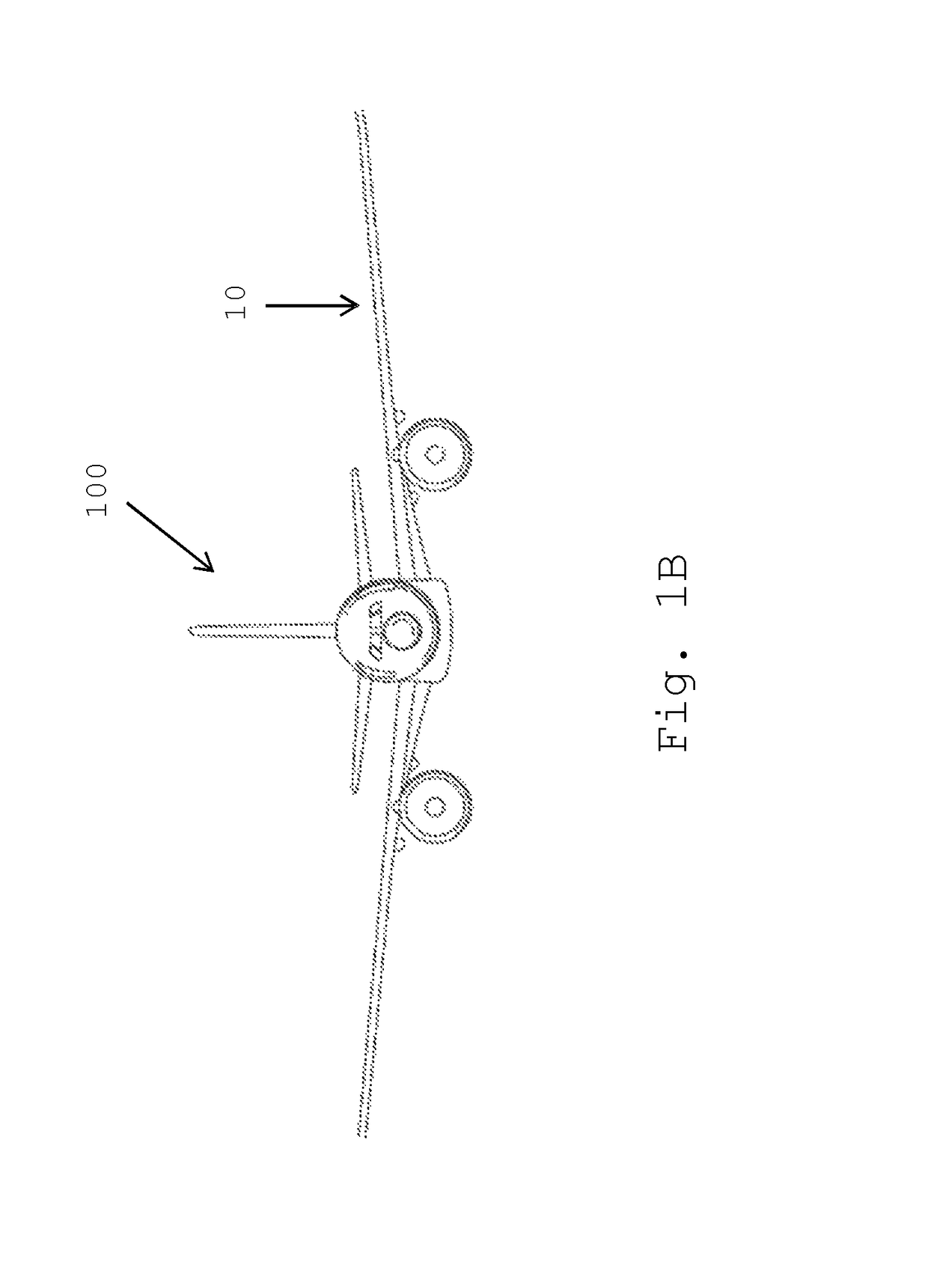Folding wing tip and rotating locking device
a locking device and wing tip technology, applied in the direction of wing adjustment, airflow influencers, transportation and packaging, etc., can solve problems such as rotation of the disk, achieve the effects of improving the combined load bearing capacity of the locking mechanism, reducing maintenance or repair time, and improving the load bearing capacity of the wing tip device and the inner wing interfa
- Summary
- Abstract
- Description
- Claims
- Application Information
AI Technical Summary
Benefits of technology
Problems solved by technology
Method used
Image
Examples
first embodiment
[0033]FIG. 2 shows a partial view of a locking mechanism 20 according to the invention, which comprises a rotatable disk 22, with a cut away section including a groove 24 which provides a guide surface for guiding a locking pin. The disk is rotatably mounted around an axis of rotation X. Shown in the locked position, the disk 22 is mounted to a fixed wing 14 via a supporting member. The guide surface provided by the groove 24 includes an outer portion 26 and an inner portion 28, with a smooth guide surface 30 extending from the outer portion 26 to the inner portion 28. The distance between a point on the outer portion 26 of the guide surface and the axis of rotation X is greater than the distance between a point on the inner portion 28 of the guide surface and the axis of rotation X, meaning that as a locking pin is guided along the guide surface, it is effectively pulled towards the axis of rotation X. FIG. 2 also shows a locking pin 32 located in contact with the inner portion 28,...
second embodiment
[0035]FIG. 3 shows the invention, with a first disk 22 as described with reference to FIG. 2, and a second disk 22′, the same shape as the first disk 22, with the same axis of rotation X, but flipped in orientation, so the disk 22′ rotates in the opposite direction to the disk 22 to engage and disengage with the locking pin 32. FIG. 3 also shows a drive mechanism 40, which drives the rotation of the disk 22 in one direction whilst also driving the rotation of the disk 22′ in the opposite direction. This may be by a tooth and ratchet arrangement for each disk 20, 22′, or any other suitable drive mechanism as will be appreciated by the skilled person. FIG. 4 also shows a support arm 42 to which the locking disks 22, 22′ are rotatably mounted, and stops 44 and 46 in the form of rotatable rollers. The stops 44 and 46 are brought into contact with the locking pin 32 as described with reference to FIG. 2.
third embodiment
[0036]FIG. 5 shows the invention. FIG. 5 shows a first disk 222 and second disk 222′, in a similar configuration to that described in FIGS. 3 and 4, though with the axes of rotation X, X′ of the first disk 222 and second disk 222′ spaced apart from each other. As can be seen, this arrangement provides the locking pin 232 with bearing surfaces at different points, allowing loads experienced by the locking pin 232 to be reacted in different directions.
[0037]FIG. 6 shows a locking pin 600 which may be used as part of a locking mechanism as described in the above embodiments of the invention. The locking pin 600 comprises a central pin 602 on which a first rotatable outer surface 604 and second rotatable outer surface 606 is mounted. The two outer surfaces 604, 606, are located to be guided by the guide surfaces of the first locking mechanism and second locking mechanism, and are free to rotate whilst being guided. The arrows in FIG. 6 indicate that the outer surfaces may rotate indepen...
PUM
 Login to View More
Login to View More Abstract
Description
Claims
Application Information
 Login to View More
Login to View More - R&D
- Intellectual Property
- Life Sciences
- Materials
- Tech Scout
- Unparalleled Data Quality
- Higher Quality Content
- 60% Fewer Hallucinations
Browse by: Latest US Patents, China's latest patents, Technical Efficacy Thesaurus, Application Domain, Technology Topic, Popular Technical Reports.
© 2025 PatSnap. All rights reserved.Legal|Privacy policy|Modern Slavery Act Transparency Statement|Sitemap|About US| Contact US: help@patsnap.com



